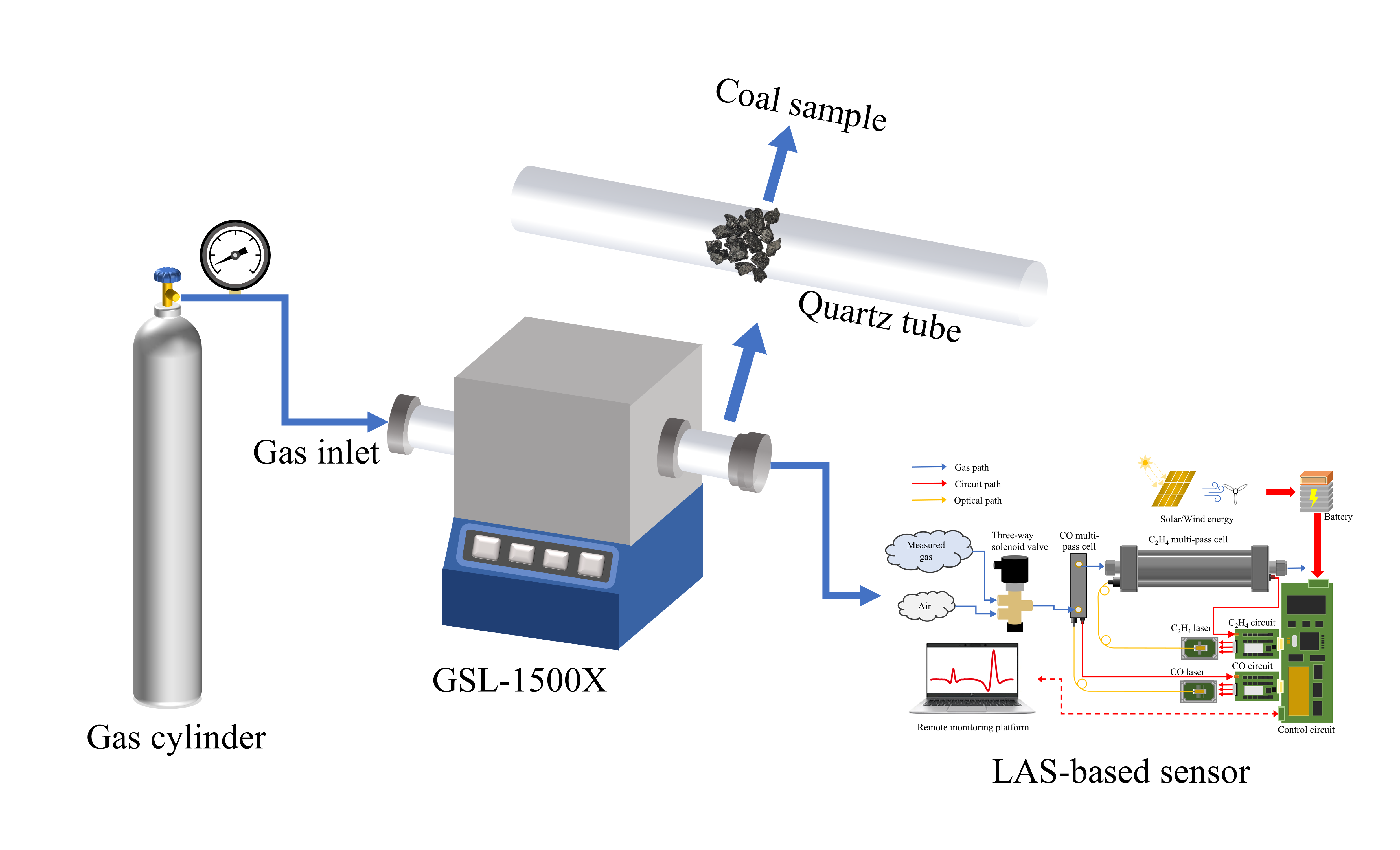
A research team led by Prof. ZHANG Zhirong from the Anhui Institute of Optics and Fine Mechanics, the Hefei Institutes of Physical Science of the Chinese Academy of Sciences, has developed a cutting-edge gas detection system that could play a critical role in preventing coal mine fires.
Their work, recently published in Safety Science, offers an innovative solution to monitor gases that are key indicators of coal spontaneous combustion, a major hazard in industries like coal mining, oil and gas, and gas supply.
Coal mine fires caused by spontaneous combustion are a significant threat, and early detection is essential for safety. Carbon monoxide (CO) and ethylene (C₂H₄) are two gases commonly released during the early stages of this process, and their detection can provide an early warning. However, traditional methods of monitoring these gases have their limitations. Electrochemical sensors, for example, are affected by temperature and humidity changes, while gas chromatography systems struggle with real-time monitoring.
In this study, the team used advanced laser absorption spectroscopy technology, which significantly improves sensitivity to these gases. By using tunable lasers at wavelengths of 2326 nm and 1626 nm in combination with long-path multi-pass cells, they were able to detect CO and C₂H₄ at levels as low as a few parts per million (ppm)—a huge leap in detection capabilities.
In addition, a new method, Spectral Adaptive Transformation Non-Negative Least Squares (SAT-NNLS), was suggested by the team. This innovative technique solves a common problem in gas detection: interference caused by other gases like methane (CH₄), which is often found in high concentrations in mines. SAT-NNLS works by correcting spectral drift and reducing noise, resulting in more accurate detection of CO and C₂H₄ even in challenging environments.
The new sensor system has already been deployed in over ten coal mines, where it has shown impressive results. It can detect potential fire risks 2-3 days in advance by tracking the release of CO and C₂H₄ as the coal heats up, providing valuable data on how these gases change with time and temperature.
The technology is expected to significantly improve safety in underground coal mines and could play an important role in other industries as well.

Schematic diagram of experimental platform of coal high-temperature oxidation in this study. (Image by WANG Qianjin)